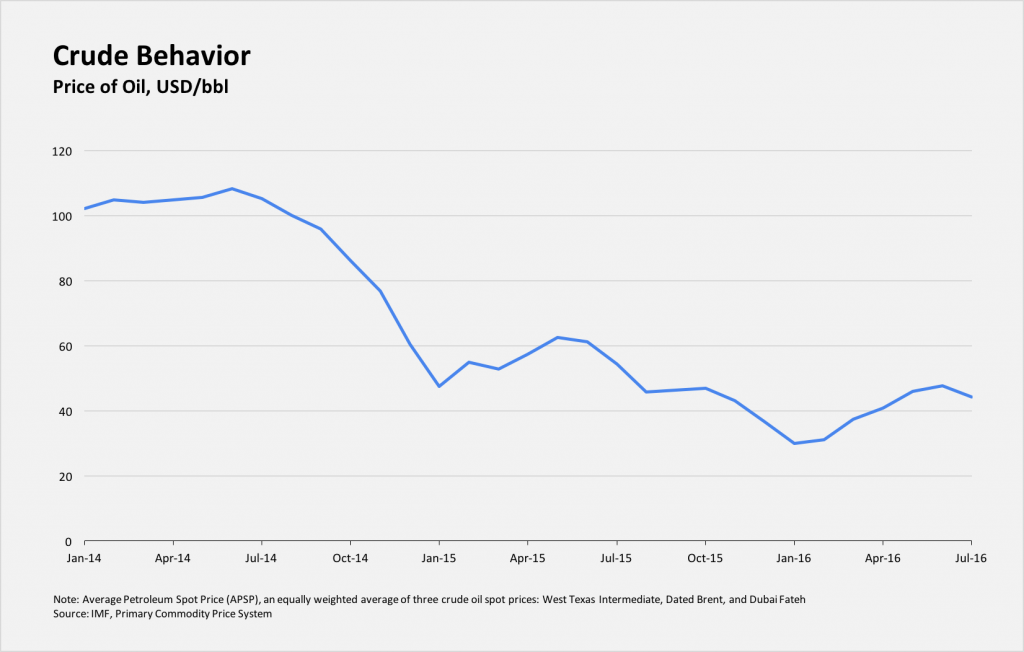Monday, October 10, 2016
Rethinking the Oil Market
by Rabah Arezki
From Project Syndicate
Oil prices have plummeted by about 65% from their peak in June 2014 (see chart below), and there is now intense debate about why. One thing we know for sure is that the oil market has undergone structural changes, thus making this latest episode different from previous dramatic price fluctuations.

The collapse in prices has been driven in part by supply-side factors. These include the United States’ rapid increase in shale-energy production in recent years, and the US government’s decision to end a 40-year crude-oil export ban. Moreover, oil output from war-torn countries such as Libya and Iraq has exceeded expectations, and Iran has returned to world oil markets following its nuclear agreement with the world’s major powers. And Saudi Arabia, the largest member of the Organization of the Petroleum Exporting Countries (OPEC), has increased production to defend its market share.
With this glut in oil, many commentators are now asking if OPEC still matters. High demand for oil since 2000 gave OPEC, and Saudi Arabia in particular, significant influence over prices, but it also spurred investments in higher-cost production methods in other locales, such as oil sands mining in Canada and ultra-deepwater oil extraction in Brazil.
Because of the delay between investment and production for conventional oil production, these projects in non-OPEC countries peaked around the same time the oil market began to slow down, and when expectations about future demand for oil started to falter.
This dynamic prompted OPEC to change its response to price fluctuations. In the past, OPEC, and Saudi Arabia in particular, would stabilize the oil market by cutting production when prices fell too low and increasing output when prices rose too high, relative to OPEC’s price target. This time around, however, at a November 2014 OPEC meeting, Saudi Arabia blocked a motion by other members to reduce production in response to falling prices.
The Saudis have instead boosted output, resulting in immense pressure on higher-cost non-OPEC producers. Saudi Arabia seems to be taking a lesson from a 1986 price-fluctuation event, when massive, unprecedented production cuts in response to increased production by non-OPEC countries failed to stabilize oil prices.
Another factor keeping prices down is that non-OPEC producers have significantly reduced their costs. But this is likely a one-time event. In theory, as the chart below shows, the cost of producing oil is usually assumed to be constant and determined by immutable factors such as the type of oil and the geographical conditions where it is extracted.
Continue reading here.
Posted by at 1:32 PM
Labels: Energy & Climate Change
Subscribe to: Posts